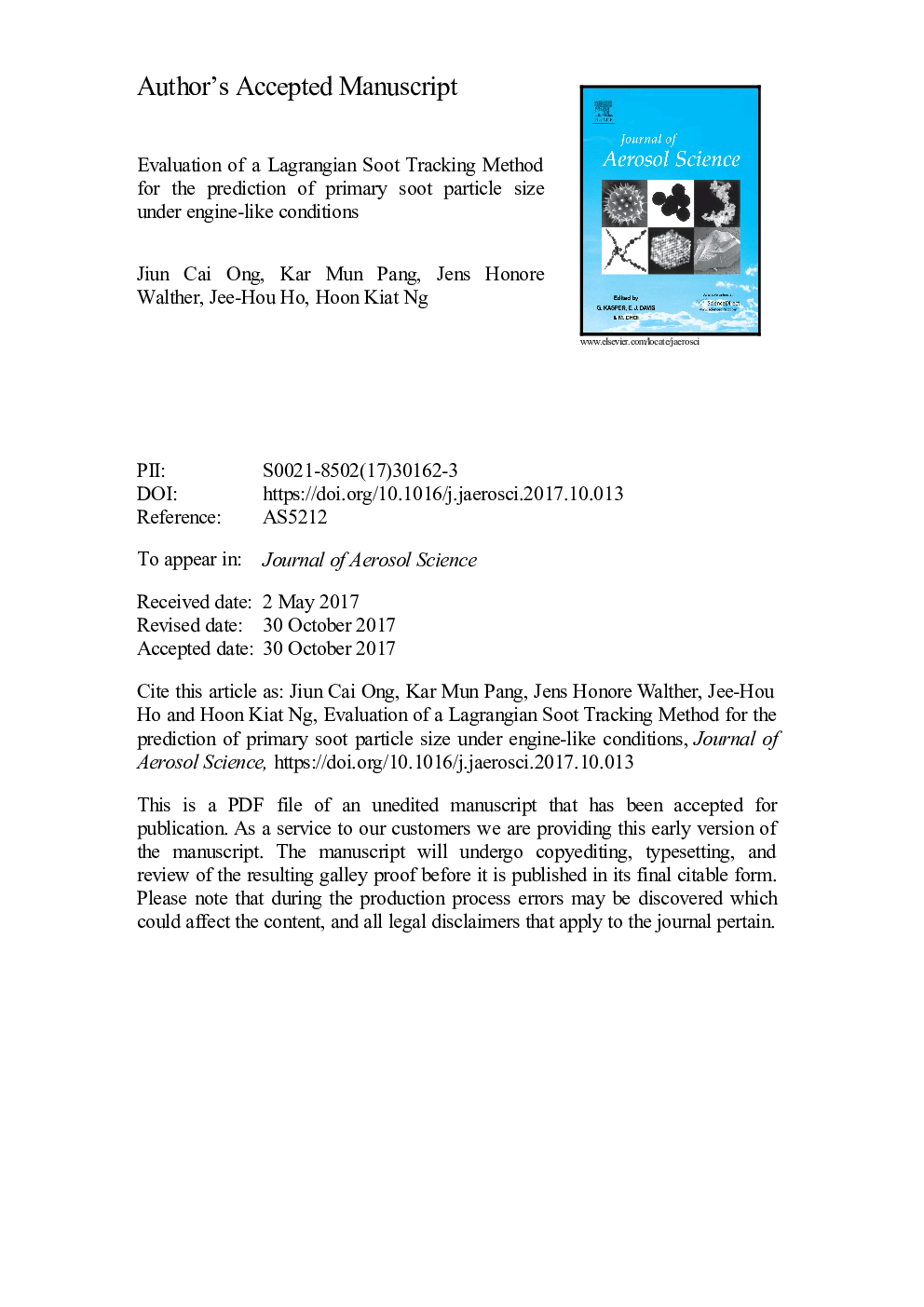| کد مقاله | کد نشریه | سال انتشار | مقاله انگلیسی | نسخه تمام متن |
|---|---|---|---|---|
| 8865326 | 1620708 | 2018 | 74 صفحه PDF | دانلود رایگان |
عنوان انگلیسی مقاله ISI
Evaluation of a Lagrangian Soot Tracking Method for the prediction of primary soot particle size under engine-like conditions
ترجمه فارسی عنوان
ارزیابی روش ردیابی دوغاب لارنژیان برای پیش بینی اندازه ذرات دود اولیه تحت شرایط موتوری
دانلود مقاله + سفارش ترجمه
دانلود مقاله ISI انگلیسی
رایگان برای ایرانیان
کلمات کلیدی
تشکیل دوده اکسیداسیون دود، اندازه ذرات دندانی اولیه، ردیابی دوزهای لاگرانژی، موتور دیزل،
موضوعات مرتبط
مهندسی و علوم پایه
علوم زمین و سیارات
علم هواشناسی
چکیده انگلیسی
This paper reports the implementation and evaluation of a Lagrangian soot tracking (LST) method for the modeling of soot in diesel engines. The LST model employed here has the tracking capability of a Lagrangian method and the ability to predict primary soot particle sizing. The Moss-Brookes soot model is used here as the Eulerian method to simulate soot formation and oxidation processes. The inception, surface growth and oxidation models are adopted and modified such that the associated reaction rates can be computed using the Lagrangian approach. The soot nuclei are treated as Lagrangian particles when the mass of incipient soot exceeds a designated threshold value. Their trajectories are then computed using the particle momentum equation. The change of primary soot particle size is dependent on the modified Lagrangian surface growth and soot oxidation models. Performance of the LST model in predicting temporal soot cloud development, mean soot diameter and primary soot size distribution is evaluated using measurements of n-heptane and n-dodecane spray combustion obtained under diesel engine-like conditions. In addition, sensitivity studies are carried out to investigate the influence of soot surface ageing and oxidation rates on the primary soot particle size distribution. With the use of surface ageing, the predicted maximum primary soot particle sizes are closer to the experimentally measured maximum primary soot sizes. Also, the associated particle size distribution shows a lognormal shape. A higher rate of soot oxidation due to OH causes the soot particles to be fully oxidized downstream of the flame. In general, the LST model performs better than the Eulerian method in terms of predicting soot sizing and accessing information of individual soot particles, both of which are shortcomings of the Eulerian method.
ناشر
Database: Elsevier - ScienceDirect (ساینس دایرکت)
Journal: Journal of Aerosol Science - Volume 115, January 2018, Pages 70-95
Journal: Journal of Aerosol Science - Volume 115, January 2018, Pages 70-95
نویسندگان
Jiun Cai Ong, Kar Mun Pang, Jens Honore Walther, Jee-Hou Ho, Hoon Kiat Ng,
